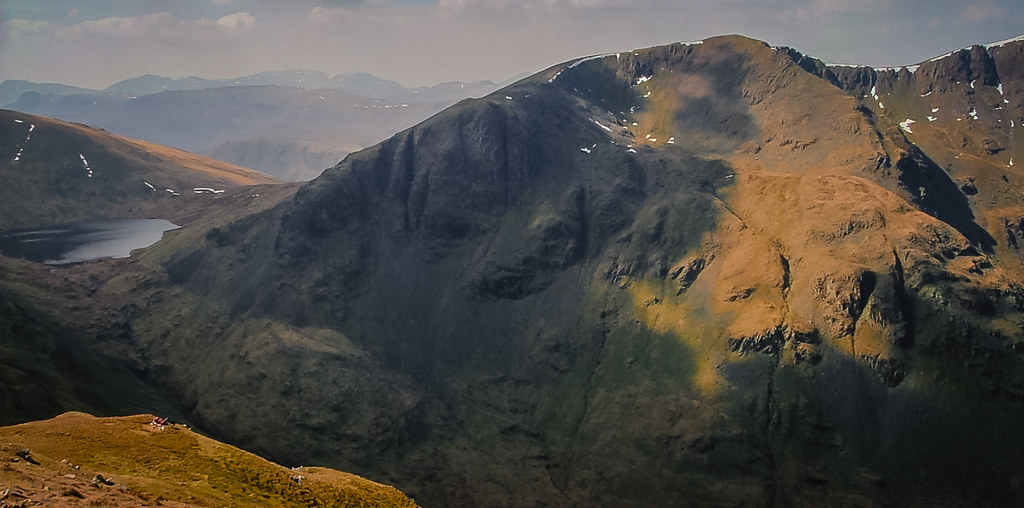#St Sunday Crag
Photo
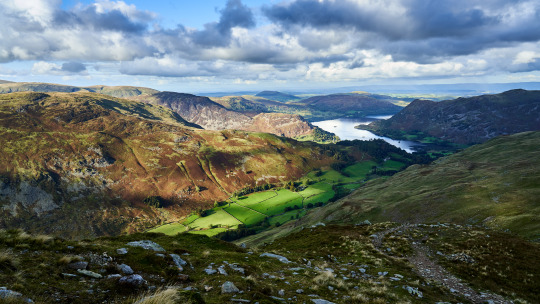
St Sunday Crag - England (by barnyz)
#St Sunday Crag#England#UK#United Kingdom#GB#Great Britain#Europe#View#Viewpoint#Rural#Countryside#Nature#Landscape#Outdoor#Photography#Travelling#Traveling#Travel#Tourism#Holiday#Urlaub#Reisen
213 notes
·
View notes
Text

The Helvellyn Range in winter seen here from St Sunday Crag in the English Lake District.
#lake district#mountains#mountainadventures#adventure time#hiking#mountaineering#hikingadventures#explore#travel#exploremore#getoutside#onelife
23 notes
·
View notes
Text
Virgen dela Pena, Bogota, Colombia

On 10 August 1685, Bernardino Rodríguez de León “saw a great and unusual radiance that was not the natural light of day” in the peaks east of Bogotá. On drawing near, he realised the light was coming from an image of an Angel, the Virgin and Child and St Joseph, outlined in the living rock. .
News of the discovery soon spread throughout the Capital and after an investigation, the Archbishop authorised the construction of a Chapel on the mountainside and public veneration on the Sunday before Ash Wednesday of 1686. The thatched Chapel collapsed in 1714 and a sturdier stone building took its place. Mysteriously, people began to see Our Lady’s face change expression – sad, tearful, joyous. On 8 May 1716, the left wall of the Chapel collapsed to its foundation, after only 150 days. It was decided to move the images from the mountain. In early June, stonemason Luis de Herrera began separating the images from the underlying rock. Legend relates that when he finished, a bird flew out. The images were cleaned, polished and touched up to make the figures and clothing more distinct. They still weighed 750 pounds. In November, men carried them on their shoulders to the plain, where they were greeted with rejoicing and dancing. Another straw shelter protected the statues until completion of a new Chapel in 1722. Now a national monument, Our Lady of the Crag is still a very active Church and an Archdiocesan Sanctuary.
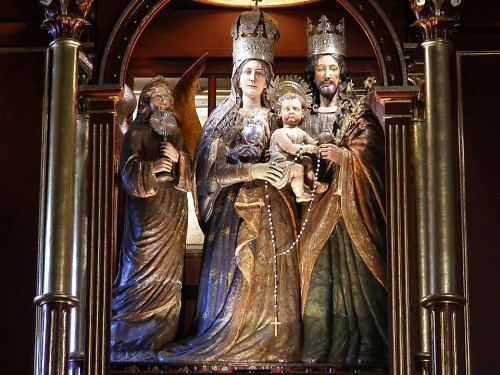
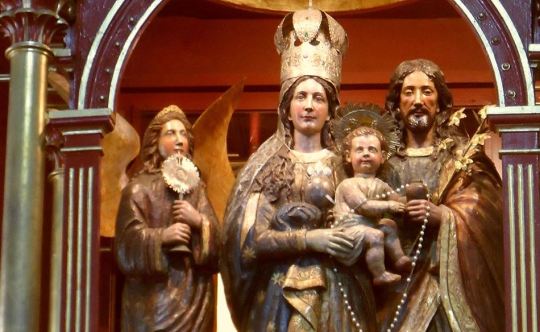
Reference:
https://anastpaul.com/2021/08/10/feast-of-st-lawrence-virgen-de-la-pena-our-lady-of-the-crag-bogota-colombia-1685-and-memorials-of-the-saints-10-august/comment-page-1/
https://es.wikipedia.org/wiki/Iglesia_de_Nuestra_Se%C3%B1ora_de_La_Pe%C3%B1a_(Bogot%C3%A1)#:~:text=La%20Iglesia%20de%20Nuestra%20Se%C3%B1ora%20de%20la%20Pe%C3%B1a,la%20jurisdicci%C3%B3n%20eclesi%C3%A1stica%20de%20la%20arquidi%C3%B3cesis%20de%20Bogot%C3%A1.
8 notes
·
View notes
Text

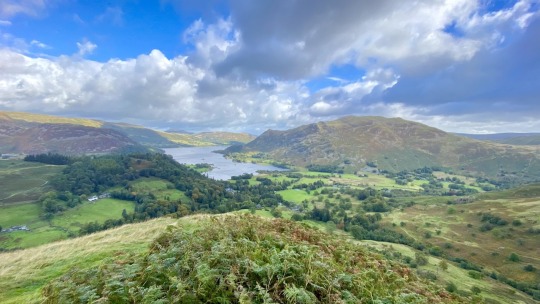


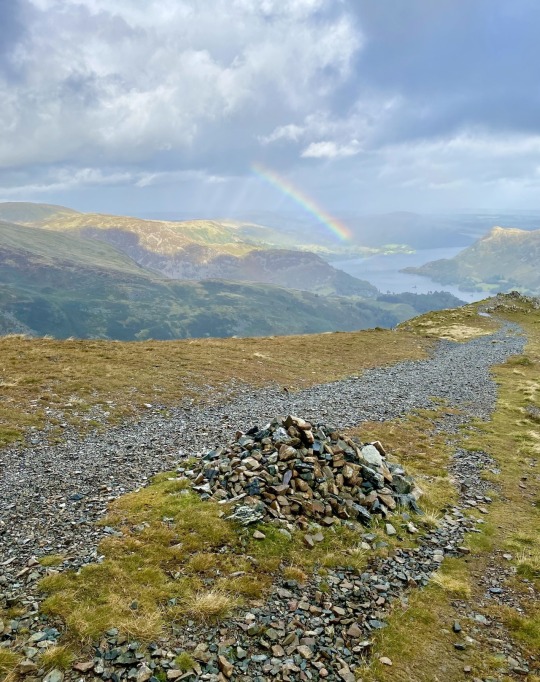

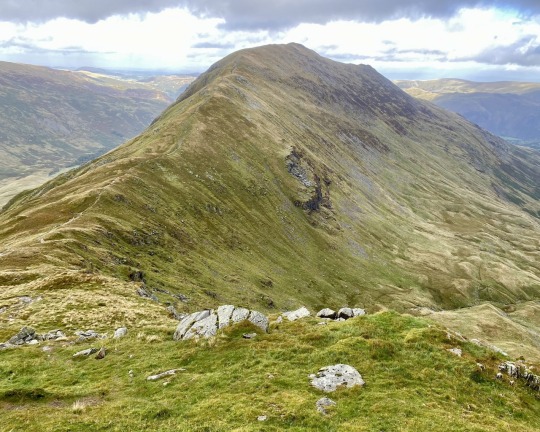

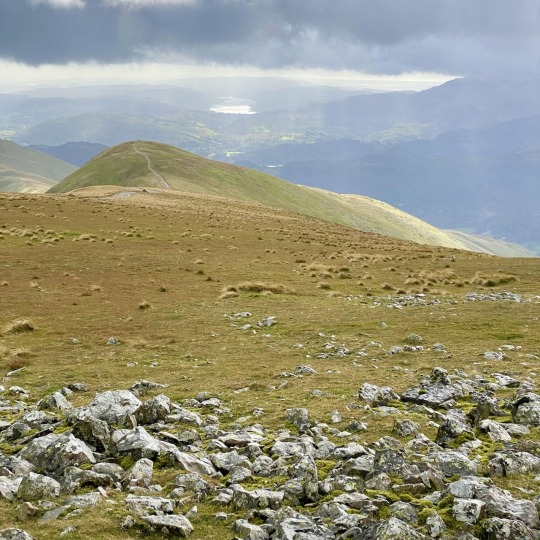
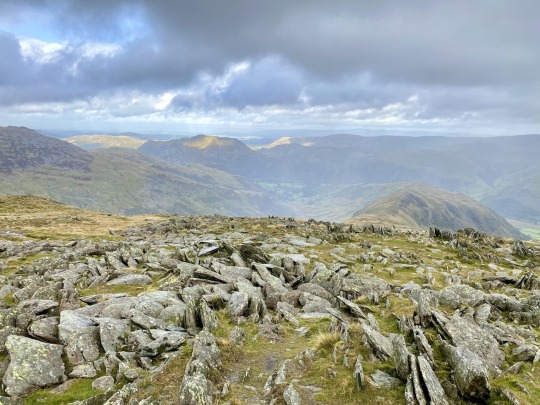



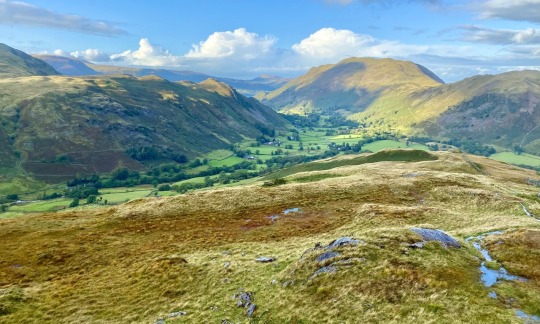

🌄 Announcing the Deepdale Horseshoe Walk
🥾 Hi all, I'm thrilled to share this fantastic horseshoe-style walk in the Lake District—the Deepdale Horseshoe walk. It's now live on my website! This journey begins in Patterdale and is one of my favourite Lake District walks, which I highly recommend. Everything you need to know about the walk, including parking details, maps, statistics, photos, and much more, is detailed on the site.
⛰️ The adventure starts with an ascent to the summit of Birks, your first Wainwright fell of the day. This peak provides a perfect spot for a break, offering stunning vistas of the surrounding landscape. From there, continue to the majestic St Sunday Crag, your second Wainwright, where an exploration of its broad plateau reveals breathtaking views over Deepdale.
🌲 The route then takes you over the rugged terrain of Cofa Pike leading up to Fairfield, Wainwright number three, famous for its extensive panoramic views that cover nearly the entire range of Lake District mountains. The journey continues eastward, crossing Link Hause to ascend Hart Crag, your fourth Wainwright fell.
🏞️ Your descent begins by crossing Hartsop above How, Wainwright number five. This ridge walk offers one of the best descents in the Lake District, characterised by gentle slopes, narrow ridges, and dramatic views into Deepdale and Dovedale. Finally, the trail leads through woodland and pasture to Deepdale Bridge on the A592 and back along the footpath to Patterdale.
🚶♂️ This invigorating 9½-mile Deepdale Horseshoe walk is a remarkable route for any walking enthusiast in the Lakes, comparable to other renowned circuits like the Coledale Horseshoe, Newlands Horseshoe, and Kentmere Horseshoe.
👉 Discover more about this captivating trail and start planning your adventure by following the link below.
0 notes
Text
Hey Dad, (Climbing in Tasmania)
Hey dad, I got back on Sunday and found time on the bus back to Hobart. I thought I’d give you a little write up to go with the rock I chose for you, if you’re interested.
On Friday the two vans left the campsite at st Mary’s after we finished climbing at ‘South Sister’. It’s a small formation of columned dolerite that rises above the Fingal Valley. To the south from the peak we could see the granite domes across Coles Bay, where we’d climbed two days prior. The past day was spent jamming up mossy, crumbly, rock (slightly fryable, as they say). We were tired from trekking the crag: under boulders, through scrub, and wherever the guidebooks took us. The fog and rain was rolling in at South Sister too, so we had to pick a new destination.
Anywhere with crack climbing was prioritised and the forecast suggested clear skies at Ben Lomond National Park, that’s where we headed. We were a party of 6: Tim, Xanthea, Nick, Alex, Jack, & myself; stuffed into two camper vans and filled with tuna avo wraps and pressed coffee.
The north side of the plateau seemed favourable since the approach to climb was shorter and there were more routes to scout out.
Alex and I were partners and the plan was to follow nick and Jack up a 3 pitch multi called ‘Rajah’. We hoped a bit of orienteering would help us find a path off the plateau via one of the scree gulleys. Low lying windswept brush poured between the pillars and onto the field of monolithic boulders. We knew roughly that these streaks of foliage on the mountain would be our walk off.
After 2 hours walking in and racking up we started climbing. I led the first pitch with good pace and Alex blitzed up without a hitch. He led second pitch and encountered a totally relentless line; 40 meters of mixed size cracks with overhanging jam moves and tiny foothold rests; an exhausting and properly freaky lead. He crushed it.
3rd pitch was mine. It was the longest, easiest, and had the shittiest sunburnt choss hanging off the face (which required quite a bit more gear to protect properly)
After 5 hours we reached the top and followed rock cairns to what we hoped was the right gulley. Plenty of down climbing through flowering bushes and wallaby tracks brought us back at the car park by 6pm.
The rock i picked up is a bit of weathered diorite (I think, you tell me) flaked from the top of the plateau at Ben Lomond. Because everything was covered in lichen and battered by the wind it was a little tricky find one that looked nice, so Alex and I had a competition to find the nicest looking rock.
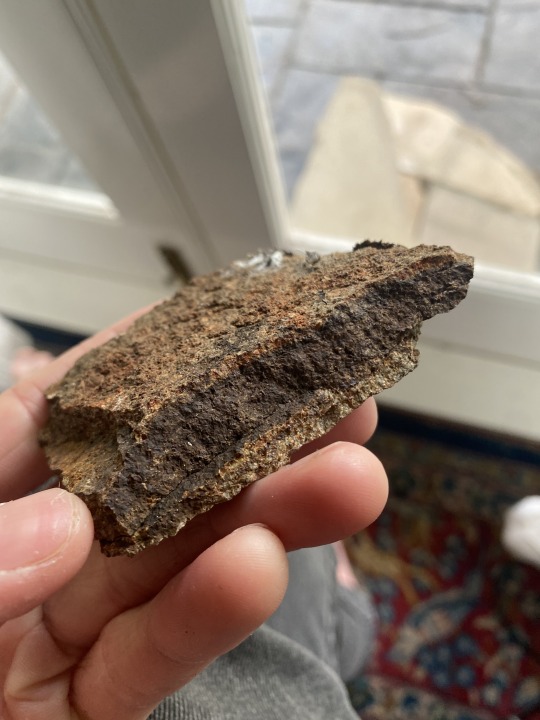
0 notes
Text
Big A went to the Lake District and here is my blog
Overview
I’ll not give loads of details but I went as part of an annual trip my brother in law and some of his mates do. They’ve been going for years. Varying levels of fitness - three very fit (including my brother in law, regular walkers and cyclers), two in the middle, two slow.
The Walks
Three of them all told. The first one was about 23km - from Patterdale up over St Sunday Crag, across to Fairfield Peak, down and round Griesdale Tarn and then up to Dollywaggon Pike. From there we walked down the valley back into Patterdale.
Second one was I’m told about 20km - a walk from Patterdale round the east side of Ullswater to Pooley Bridge. Low elevation, mostly keeping to just above the water level.
Third one was from Patterdale up past Angle Tarn to High Street, then back down via the valley to Harstop and then Patterdale. Dunno how far as I’d left my watch at the airbnb but we were out for about 7 hours.
The Good
I survived.
Endurance-wise I was fine. My legs got pretty tired towards the end of the second walk, but by then I think I was as hungry as I was tired. More on that anon. But certainly even after the exertions of the first walk - including a direct slog up Dollywaggon - I still had plenty left in the tank for a brisk walk to the pub down the valley, getting there with the first group.
The last time I went I was very slow, and I wasn’t sure whether this was down to having had a stomach bug about a week before. I was faster this time, very much in the middle of the pack and, on flatter ground, able to set the pace or be in the starting group.
I didn’t get any blisters, and my karrimor boots continued to perform well; though the right one had developed a weird clicking sound which became the source of amusement.
The Bad
A number of things here.
Layering. I got this wrong on a couple of occasions. The first walk I wore no base layer on my legs and a wicking tee as a base on my torso, under a fleece and a shell. At the top of ridges/fells it was cold and very windy. Part of the trip was to launch the ashes of the father of one of the lads off Dollywaggon Pike in a firework, which was great, but involved much standing around. By that point I swapped my shell for an insulated jacket but I started shivering. I had my ME thick gloves on as well. Warmed up quickly on the descent, but still. Put on my merinos, top and bottom, for the next two walks; much better. BUT - I could probably make a reasonable case for investment in a) a new hat (the elastic has almost gone in my OR one) and b) a thicker fleece to carry around and whack on as necessary. A belay jacket would be good - maybe I could get one of those £60 down ones from Uniqlo that stuffs down to a small size.
Food. Did not bring nearly enough. I should have brought a lot of chocolate or other sugary/carby snacks. Didn’t. I can’t pretend it would have helped me be quicker or stronger but it would have stopped me flagging which became an issue particularly on day 3.
Knowing my own limitations. I worry about balance a lot. Exposure makes me feel a little uncomfortable, and steep downhills worry me. I constantly worry about slipping or losing my balance. I don’t know whether I have balance issues, mild vertigo, or am lacking strength in stabilising muscles, but this became a problem on the third walk. We came down a direct route from High Street to a valley and I slipped over 4 or 5 times. Only once particularly painfully, thank goodness. My legs were tired, my left knee hurt. I don’t know whether it was just a walk too far, or whether I would have struggled with anything steep. Anyway, it might be worth having a walking pole for such eventualities.
Uphill struggles. Anything vaguely steep slowed me right down. I had to do 30 steps then stop for breaths. Sometimes less than this on very steep bits. I think part of this is down to just not doing this sort of thing much. But I also think some is down to muscle strength.
In conclusion
Hmm. Am I the sort of person that is going to do this sort of walking on the regular? I don’t live near anything like this, not really. I don’t have the means to travel that regularly to somewhere like the Lakes. So I don’t know how much I need to put pressure on myself. I think I could realistically do a bit more. I could get out on my bike more. I could also do more squats. Leg strength probably wouldn’t be that much of a chore to develop.
Big A
0 notes
Text
Ruthwaite Cove
A view down Grisedale from the col between Nethermost Pike and Dollywagon Pike.
A view down Grisedale from the col between Nethermost Pike and Dollywagon Pike.
The name Grisedale portrays its Norse roots. The valley of the pigs — ‘griss’ meaning pigs, probably wild boar.
On the other hand, St. Sunday Crag, the huge fell on the right is from St Dominic and the Latin: Dies Dominica, the Lord’s Day.
I hadn’t appreciated the Grisedale face of St. Sunday Crag is so steep and…

View On WordPress
0 notes
Text
Week 189, Day 1319.
Our holiday is slowly coming to a close and I am enjoying every last minute of it. I have taken the last few days off to trek waterfalls, hike wainwrights, go kayaking, and spend time at the pub. It has been perfect. Below are a couple of photos from the last few days.
One of the few things I appreciate about doing the actual climb up the mountain is the fact that you need to be physically capable to make it up to the top and it gives me hope that the sheer amount of wine I drink and chocolate I eat haven’t set me back too much. :’)
Photo: On top of St Sunday Crag, and then a perfect lunch spot at Grisedale Tarn. ❄ Source: Phone camera.

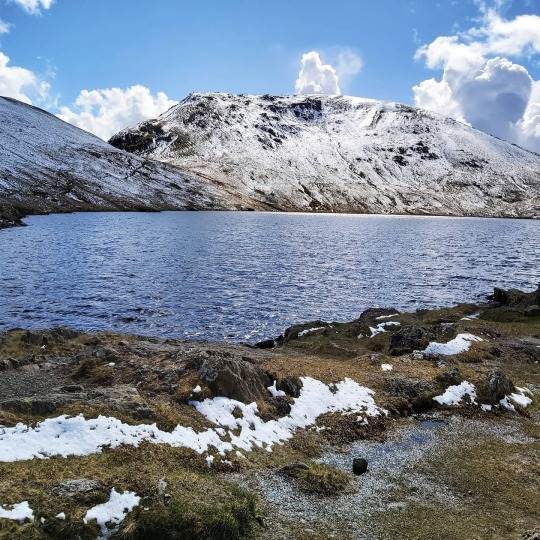
Work is going to be absolutely hectic next week and I am also a little behind with my literature review progress. But, whatever, even final year PhD students are allowed a little time off.
I leave you with a short encounter I had with a local who I asked whether living in the Lake District permanently makes one less appreciative of how beautiful it is here. And he said, “for some, yes, for me, no, but I believe that you have to look, to really look at what’s in front of you, and all too often people forget to do that”. I decided to follow his advice, and for the first time noticed that a wall I have walked by many times is actually beaming with life (see photo at the end of the post). 🌿
Take time to look, and really notice where you are, what is in your space, and who you share it with. You never know how it might change your life and your perspective of it.
Until next week!
Photo: A local wall in Ambleside, beaming with life. Source: Phone camera.
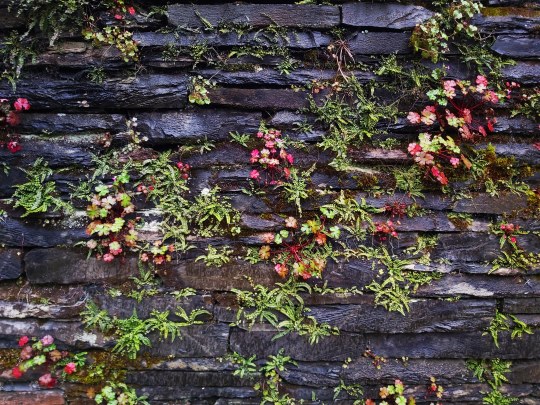
#the diary of a phd student#phd life#phd#studyblr#gradblr#final year phd student#thesis writing#literature review#holiday#time off#lake district#ambleside#windermere#notice what is in your space#climbing mountains#hiking#waterfalls#trekking#nature#life#appreciation#mindfullness#being outdoors#pub#wine#chocolate#wise words from a local#women in stem#water research#engineering
13 notes
·
View notes
Text
HOMILY for 28th Sunday per annum (C)
2 Kings 5:14-17; Ps 97; 2 Tim 2:8-13; Luke 17:11-19

“Your faith has saved you”, this is to say that, it is through believing in Jesus Christ, believing in who he is – and he is truly God and truly Man – that we are healed, made whole, saved. All ten lepers believed that Jesus was a miracle worker and a healer – they’d obviously heard about him and had seen him from afar. So, as soon as he enters their village, they call out to him and ask him to have mercy and heal them. However, this is not faith. This is consumerism or just begging – asking for something from someone who can give us what we want. And this, unfortunately, is how many of us might pray. We ask for things, and if we don’t get what we asked for, we go away disappointed, our so-called faith shattered. So the ten lepers ask to be healed of their leprosy, and they’re willing to obey Jesus, just as I might obey my doctor when he tells me to take certain tablets, or do more exercise and so on. And if I do, then my health improves. In a sense this is all that the lepers do, notwithstanding the miraculous nature of their healing.
But Jesus heals them miraculously because he wants to bring them to faith. What I mean by this is that the Lord wants them to recognise who he is, and thus enter into a relationship founded on trust, love, and gratitude. God always wants this of us because God is love. Hence, St Paul says to Timothy: “We may be unfaithful, but he is always faithful, for he cannot disown his own self. “ God can never disown us, because he has bound us to his own self through the Incarnation of Jesus Christ. Hence, God wants us to know him as intimately as a shepherd knows his sheep; to trust in him as a child trusts a mother or father; and to rejoice in him, as the leper does when he praises God “at the top of his voice.” This relationship that God desires with you and me, therefore, is intimate, friendly, warm and loving. Few of us have that kind of relationship with our doctor, or the pharmacist, or the delivery man. Those relationships are transactional – they’re based on commerce, on buying and selling, and getting what we want. Sadly, most people seem to view God, and indeed, view the Church, and their own parishes, and priests in this way. But this is not how it should be, it is not what God desires. The prophet Elisha makes it clear that God doesn't want a present or any favours from Naaman in return, because he is not buying a service from God. Rather, God wants an exclusive relationship with Naaman: "your servant will no longer offer holocaust or sacrifice to any god except the Lord." Because it is this kind of intimate marital-like relationship that God desires, and not the kind of attitude that sees God as a service provider. This would be an obstacle to having a faith that saves.
Consider, on the other hand, the Samaritan who is cured. He jumps with joy, praising God, as soon as the miracle is worked and he runs back to Jesus. For he realises at once who Jesus is. This is not just a Master, as in a wise teacher. This is not just a miracle healer who he calls upon to have pity on him. No, this is God for only God can heal like this. And he believes this through a gift of the Holy Spirit, for this kind of living faith is a divine gift from God. But he is able to believe, able to receive the gift of faith because he has a good disposition, he is open to believing, he is humbly in search of Truth in all its fullness. He is, as St John Henry Newman (whose canonisation we celebrate today) says, “on the look -out”. So, Newman explains: “As the Jewish believers were on the look-out for a Messiah who they knew was to come, so at all times, and under all dispensations, and in all sects, there are those who know there is a truth, who know they do not possess it except in a very low measure, who desire to know more, who know that He alone who has taught them what they know, can teach them more, who hope that He will teach them more, and so are on the look-out for His teaching.” Such people, therefore, are humble, open to grace, and looking for God.
These qualities are evident in the Samaritan. We see his humility as he comes and prostrates himself before Jesus. In doing so, he acknowledges the divinity of Christ. And then he gives thanks to Jesus, or literally (in Greek), gives him glory – again, he does something that is normally reserved for God, so he believes in who we know Jesus to be. Because the Samaritan, in humility and faith has acknowledged who Jesus is, the Lord tells him: “your faith has saved you.” In Greek, the sentence has two meanings: your faith has healed you, which refers to the physical cure from leprosy, and then the deeper meaning, your faith has saved you, had led to your eternal salvation.
So too for us in our time. God can only heal and save us, he can only draw us to himself in love if we go to him in humility, if we’re open to being loved by him, and if we’re willing to trust him and let him be our loving and merciful God. So many resist and refuse to turn back to him, like the nine other lepers. Many, indeed, do not want to have a genuine personal relationship with God, preferring to have a consumerist approach to the Faith. Many prefer their own ways, their own ideas, their own habits of mind and action, and a relationship with God is just too demanding, because he might expect too much of us. As St John Henry Newman comments, “their own passion or pride, self-love or self-will” makes it difficult to hear the voice of God, to acknowledge him, to believe and trust in him.
Newman knew the demands of faith. His humble search for the fullness of the Truth, his search for deep friendship with Jesus Christ led him to the Catholic Church. He left behind a successful career as an Anglican vicar, Oxford professor, and respected man in Victorian society; he left behind old friends, and a secure livelihood, and the familiar in order to follow his conscience. And his conscience led him to become a Catholic. As Pope Benedict XVI said when he came to London in 2010: “Newman’s life… teaches us that passion for the truth, intellectual honesty and genuine conversion are costly. In our own time, the price to be paid for fidelity to the Gospel… often involves being dismissed out of hand, ridiculed or parodied. [However, like Newman] if we have accepted the truth of Christ and committed our lives to him, there can be no separation between what we believe and the way we live our lives. Our every thought, word and action must be directed to the glory of God and the spread of his Kingdom.”
And what about us today? God wills to give us the faith of the Samaritan, the faith of Newman, if we only approach him with humble trust and gratitude. We’re invited each day to trust in God’s love and providence. This trust comes from real relationship with God, it is the fruit of prayer. And there is, I think, no better prayer today, no more beautiful an expression of trust in divine providence than this poem by heaven’s newest Saint, John Henry Newman:
“Lead, kindly Light, amid the encircling gloom
Lead thou me on;
The night is dark, and I am far from home,
Lead thou me on.
Keep thou my feet; I do not ask to see
The distant scene; one step enough for me.
I was not for ever thus, nor prayed that thou
Shouldst lead me on;
I loved to choose and see my path; but now
Lead thou me on,
I loved the garish day, and, spite of fears,
Pride ruled my will: remember not past years.
So long thy power hath blessed me, sure it still
Will lead me on,
O'er moor and fen, o'er crag and torrent, till
The night is gone;
And with the morn those angel faces smile,
Which I have loved long since, and lost awhile.”
#faith#consumerism#salvation#relationship#love#providence#trust#St John Henry Newman#saint#canonisation
9 notes
·
View notes
Photo

Man seriously injured in 300ft plunge from St Sunday Crag On Saturday 29th April, a 69-year-old man fell approximately 300ft from St Sunday Crag in the Lake District. Full story: http://www.cumbriacrack.com/2017/05/01/man-seriously-injured-300ft-plunge-st-sunday-crag/
0 notes
Photo

A return to the Lake District and my passion of hiking photography. A glorious day of light starting from Patterdale, taking in Hartsop above Howe, Hart crag, Fairfield, St Sunday crag and finally Birks. Another memorable day, blessed with some of the best hiking conditions. Visit my website: httpsHiking Photography - The Dovedale horseshoe via Pocket https://www.youtube.com/watch?v=YDrQM9DRBT0
0 notes
Text
Fairfield & The Helvellyn Range from St Sunday Crag
#lake district#mountains#mountainadventures#adventure time#winter#mountaineering#hiking#explore#exploremore#travel#getoutside#onelife
3 notes
·
View notes
Text
Sanctuario Nuestra Señora De La Peña - Bogota, Colombia
Santuario Nuestra Señora De La Peña Bogota
(from Saints of the Day - Instagram)
On August 10, 1685, Bernardino Rodríguez de León "saw a great and unusual radiance that was not the natural light of day" in the peaks east of Bogotá. On drawing near, he realized the light was coming from an image of an angel, the Virgin and Child, and St. Joseph, outlined in the living rock. News of the discovery soon spread through the capital, and after an investigation, the Archbishop authorized construction of a chapel on the mountain and public veneration of the images on the Sunday before Ash Wednesday of 1686. The thatched chapel collapsed in 1714, and a sturdier stone one took its place. Mysteriously, people began to see Our Lady's face change expression at times: sad, tearful, joyous. On May 8, 1716, the left wall of the chapel collapsed to its foundation, after only 150 days. It was decided to move the images from the mountain. In early June, stonemason Luis de Herrera began separating the images from the underlying rock. Legend relates that when he finished, a bird flew out. The images were cleaned, polished, and touched up to make the figures and clothing more distinct.
They still weighed 750 pounds. In November, men carried them on their shoulders to the plain, where they were greeted with rejoicing and dancing. Another straw shelter protected the statues until completion of a new chapel in 1722. Now a national monument, Our Lady of the Crag is still an active church and an archdiocesan sanctuary.

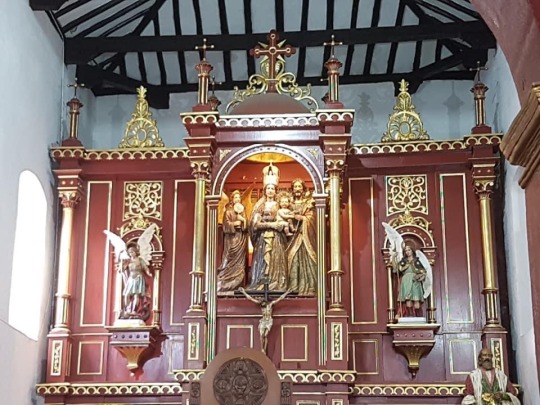
View of the Altar.

Close-up of the Holy Family.


The back of the statues.
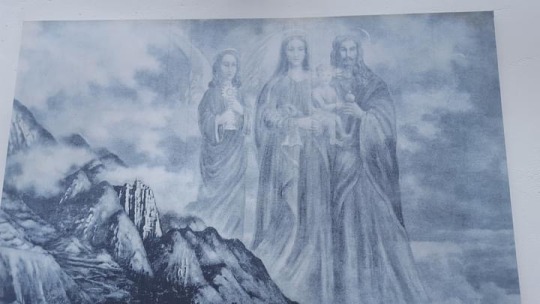
#holy family#holy spouses#La Sagrada Familia#head of the holy family#saint joseph#saint joseph the worker#Saint Joseph the Patriarch#Husband of Mary#Baby Jesus#savior of our savior#three sacred hearts#earthly trinity#st joseph#st joseph the worker#yearofstjoseph#Year of St Joseph#500th anniversary#500yearsofchristianity#protodulia#Terror of Demons#hyperdulia#latria#san jose#san giuseppe#bogota#colombia#sacred art#Sacred Heart#immaculate heart#chaste heart
0 notes
Photo

Descending the Mountain Path off St Sunday Crag #fromlakelandwithlove #hikingthelakes #lakedistrict #lakedistrictwalks #lakedistricthikers #lakedistrictuk #thelakedistrict #hiking #hikingadventures #hiker #hikersofinstagram #hikers #outdooradventures #outdoor #naturephoto #nature #ignature #instanature #lakeland #fairfieldhorseshoe #lakelanders #landscapephoto #landscapephotography #landscape #mountains #mountain #mountainhiking #mountainhike https://instagr.am/p/CDqfODgj62l/
0 notes
Video
Dollywagon Pike and Griesdale Tarn by Kevin C J Poole
Via Flickr:
View from St Sunday Crag 2010
1 note
·
View note
Photo
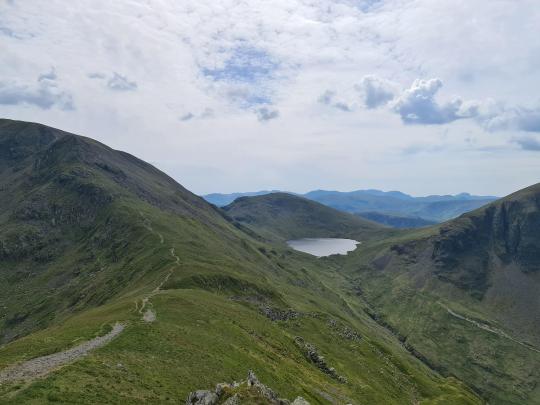
Looking down to Grisedale Tarn from St Sunday Crag, The English Lake District [4000x3000][OC] via /r/EarthPorn https://ift.tt/3dxKvKf
0 notes
